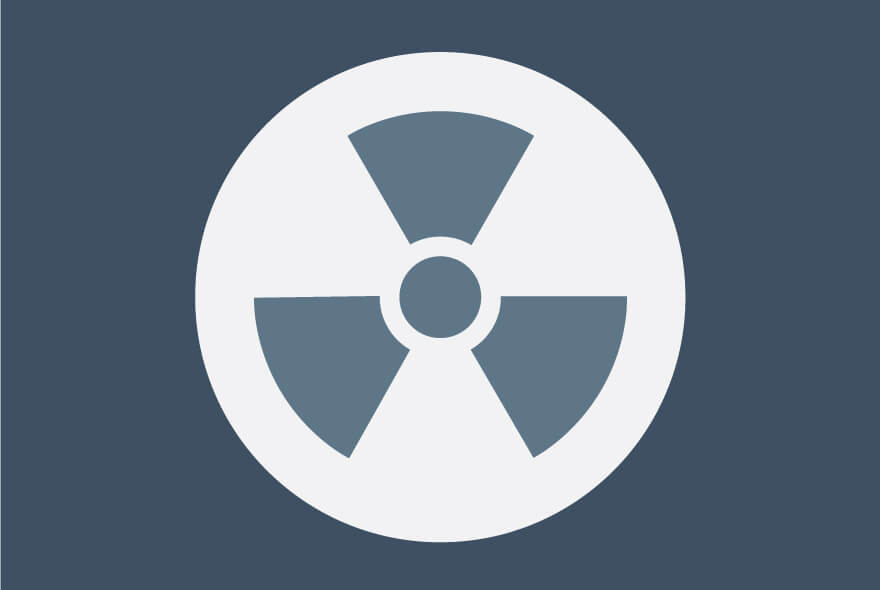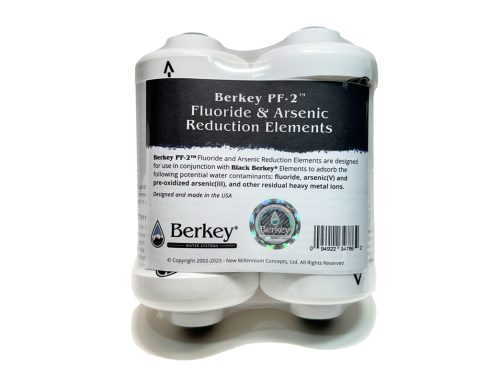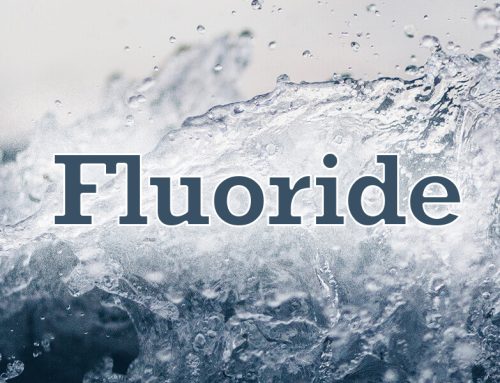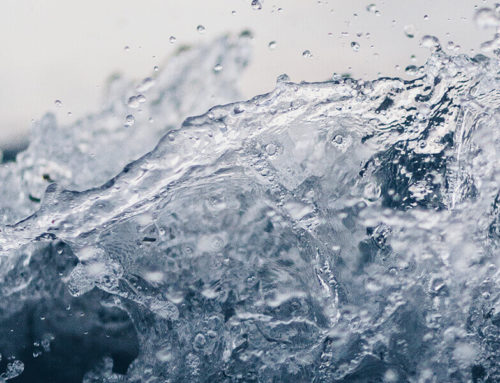What are radiological water contaminants?
Radiological water contaminants are undesirable radioactive substances that have entered a water supply. They are also known as radionuclides. Typical, naturally-occurring radiologicals found in drinking water include, “…isotopes of radium, uranium and radon, among others. Fission products from man-made nuclear reactions are also of concern today, particularly radioactive cesium and iodine.” 1
NATURALLY-OCCURRING RADIOLOGICALS
Naturally-occurring radiologicals are found everywhere: the earth’s crust, food, the sun’s rays and even our DNA. Radionuclides like uranium, radium and radon are often found in areas with granite bedrock. 2 Potassium is present in bananas, brazil nuts and carrots among other foods.3
According to the EPA website:
Naturally Occurring Radioactive Material (NORM) is defined as, “Materials which may contain any of the primordial radionuclides or radioactive elements as they occur in nature, such as radium, uranium, thorium, potassium, and their radioactive decay products, that are undisturbed as a result of human activities.” 4
Human activity at times alters and disseminates naturally-occurring radiologicals, increasing the potential for human exposure. Referred to as Technologically Enhanced Radioactive Material (TENORM), such radiologicals may be the result of waste from:
- The coal industry (mining and combustion)
- The oil and gas industry (production)
- Metal mining and smelting
- Fertilizer (phosphate) industry
- Building industry
- Recycling5
OTHER SOURCES OF RADIOLOGICALS
Radiologicals can also originate from man-made sources, such as waste from nuclear power plants and some medical facilities. Released, or improperly stored radioactive particles can seep into groundwater, or bind to particles of dust in the air. These particles can then travel for a distance before settling into surface drinking water sources , like rivers, lakes and streams that supply a community’s drinking water.
What technical information will help me understand radiological contaminants?
Non-ionizing radiation:
- Contains enough energy to move or vibrate atoms but not enough to remove electrons
- Sources include radio waves, visible light, and microwaves
- Not regulated by the EPA
Ionizing radiation:
- Contains enough energy to remove electrons out of atoms (ionization)
- Sources include radioactive elements, cosmic particles from space, x-ray machines
- Regulated by the EPA
- Can damage human tissue and DNA, thereby posing a significant risk to health
THE THREE MAJOR TYPES OF IONIZING RADIATION
There are three major types of ionizing radiation with different levels of penetration and particle size:
- Alpha particles are not known to penetrate human skin but are dangerous if ingested or inhaled
- Beta particles can penetrate the top skin layer, and are most dangerous if ingested or inhaled
- Gamma rays can easily penetrate several layers of human tissue and kill living cells
HOW RADIATION EXPOSURE IS USUALLY EXPRESSED
Radiation exposure is usually expressed in a unit of measure called millirem.6 It represents a measure of the energy deposited in human tissue, and its ability to produce biological damage. According to the EPA, in the US, the average annual radiation dose per person is 620 millirem.7Radioactivity in drinking water measurements is typically expressed in picocuries per liter.
What are the potential health risks?
Long-term exposure, or brief exposure to radiologicals in high doses, is known to lead to cancer. This includes cancers of the lungs, skin, bone, liver, kidneys, stomach and thyroid glands, and many other human tissues.
How does exposure typically occur?
Radiation exposure typically occurs by inhaling, ingesting, injecting, or absorbing radioactive materials.
EXPOSURE TO ALPHA EMITTERS
Radiologicals that are known to emit alpha particles (alpha emitters) are found in rock and soil, and can get into groundwater. Alpha emitters do not penetrate the skin deeply. In fact, clothing can stop them. However, alpha particles can be ingested, typically breathed in as radon. Radon is a colorless, odorless gas known to cause lung cancer. If you live in an area at risk for radon (or to find out if you do), be sure to visit the EPA website to learn more: EPA.gov- Radon information
Alpha Emitters include:
- Americium-241
- Neptunium-237
- Plutonium-238 and -239
- Polonium-210
- Radium-226 and -228
- Radon-222
- Thorium-232
EXPOSURE TO BETA AND PHOTON EMITTERS
Beta and photon emitters are serious concerns, and produce even stronger effects than alpha emitters. They can be found in surface water around nuclear power plants as well as some industries and medical facilities. When such sites dispose of their radioactive waste, it can sometimes leach into the soil where it can potentially get into groundwater and then into water supplies.
One specific example of a beta emitter is lead-210, which is is a radioactive form of the metal that has decayed from uranium-238. 8 It is commonly found in high-phosphate fertilizers, and is known to be a cancer-causing component of cigarettes.9
Beta Emitters include:
- Actinium-227
- Californium-251 and -252
- Cesium-137
- Cobalt-60
- Iodine-129 and -131
- Lead-210
- Nickel-63
- Strontium-90
EXPOSURE TO GAMMA RAYS
Radiologicals that produce gamma rays are found in medicine:
- Radioactive tracers
- Cancer treatment
- Equipment sterilization
Gamma rays are also generated by events such as supernova explosions (when massive stars are destroyed), and by events such as the decay of radioactive material in space.
Exposure to gamma rays can occur as a result of background radiation, or the naturally-occurring decay of radioactive particles in the environment. All people experience an annual, low-dose exposure due to this process. Those in nuclear-related industries generally receive a slightly elevated level of exposure.
What are the EPA drinking water standards for radiologicals?
Drinking water standards for radionuclides were first set in 1962. These standards were updated by the EPA in 2000 and called the Radionuclides Rule.10 The new rule established standards of:
- 5 picocuries per liter for combined radium (Ra-226 and Ra-228)
- 30 micrograms per liter for uranium
- 15 picocuries per liter for gross alpha emitters
- 4 millirems per year for gross beta emitters
How can I protect myself and my family from exposure to radiologicals?
Please note that, “Boiling tap water does not get rid of radioactive material.”11
FIRST, UNDERSTAND YOUR WATER SOURCES
Using Public Water Systems
Public water supplies are supposed to be tested and treated to meet US EPA standards under the Safe Drinking Water Act. Check the yearly water report for your local municipality to research what you can expect in terms of both naturally-occurring and man-made radiological contaminants in your area.
Using Private Wells
If you are on a private well however, you may not know if, or at what level, radiation is present in the water. Most well owners don’t consider testing for radiological contaminants- mainly because they don’t know they may be at risk. If you are a homeowner on your own well, seriously consider having your water checked for potential radiological contamination.
NEXT, CONSIDER DAILY WATER FILTRATION
Consider a water filter for naturally-occurring or potentially atypical radiological levels in your area.
With a gravity-fed system, like a Berkey ® water system, there are two essential things to check for when specifically considering radiologicals:
- The elements that come with the system are truly capable of removing or greatly reducing radiological contaminants- not all are.
- The systems elements have been not just been tested “out of the box,” but tested over time, using many gallons of water. This is to ensure that the element reduction will hold up over time.
FINALLY, PLAN FOR AN EMERGENCY WATER FILTRATION SCENARIO
In a crisis scenario, such as an accidental or weaponized nuclear incident, it is important to have a survival water filter truly capable of removing or greatly reducing radiological contaminants at the ready.
In such cases, the primary objective for those in a contaminated hot zone would be to get to a non-contaminated zone as quickly as possible. Therefore, you would want to choose a solution that fits the following requirements:
- Extreme tested to demonstrate effectiveness
- Portable, so it can easily travel with you and your family
- No electricity or water pressure required to operate the filter
- Capable of producing sufficient water for your group in a timely manner
As we will discuss, Berkey ® Systems using Black Berkey® Elements are the ideal choice for everyone considering a gravity-fed, survival water filter.
KNOW WHAT TO DO POST-EVACUATION
For those who are unfortunate enough to be caught in a radiological contamination zone, it is recommended that the Black Berkey ® Elements be replaced as soon as is feasible post-evacuation. This is because the more radiological contaminants the elements remove, the more radioactive the elements themselves become. Consider having backup sets of Black Berkey® Elements in your emergency kits or bags at all times to make the switch quickly.
Black Berkey® Element Radiological Contaminant Extreme Testing
VERIFIED PERFORMANCE OVER TIME USING MULTIPLE SAMPLES MATTERS
Some filter elements may show strong results in a test using one water sample. In contrast, NMCL believes that it is vitally important that the reduction capability of our Black Berkey® Elements be tested over time. Therefore, Berkey® Systems conducted the radiological contaminant reduction testing of the Black Berkey® Elements to 50 gallons; an extreme situation and test.
DATA PAINTS A CLEARER PICTURE
Our approach provides information on the rate of decline in efficiency, and verifies that the rate of decline is not significant. For example, in our Gross Alpha Reduction Test, the efficiency reduces from 99.2% to 98.7% after 50 gallons. This represents a reduction in efficiency of only 0.5% (1/2 of 1%) after 50 gallons, which likely indicates that at the end of the 3,000 gallon life of the element, the reduction level should still be around 70%. Also, take a look at our Gross Beta Reduction Test and Uranium Reduction Test, both of which similarly demonstrate the reduction capabilities of the Black Berkey® Elements over time.
THE BOTTOM LINE
Your best protection against radiologicals in water is to have a water filtration system that has been rigorously tested to remove radionuclides to below detectable levels. In a crisis situation, Berkey ® Water Systems are portable, travel easily, and function without electricity or water pressure, making them the ultimate survival tool.
References
(1) Water Research Foundation: Radionuclides in Drinking Water
(2) The National Center for Biotechnology Information: Uranium and Radon in Private Bedrock Well Water in Maine: Geospatial Analysis at Two Scales
(3) Idaho State University: Radioactivity in Nature
(4) EPA.gov: Technologically Enhanced Naturally Occurring Radioactive Materials (TENORM)
(5) World Nuclear Association: Naturally-Occurring Radioactive Materials (NORM)
(6) Wikipedia: Roentgen equivalent man
(7) EPA.gov: Radiation Sources and Doses
(8) U.S. Geological Survey: 210Pb (lead 210) Dating
(9) CDC.gov: Cigarette Smoking and Radiation
(10) EPA.gov: Radionuclides Rule
(11) CDC.gov: Drinking Water Safety





